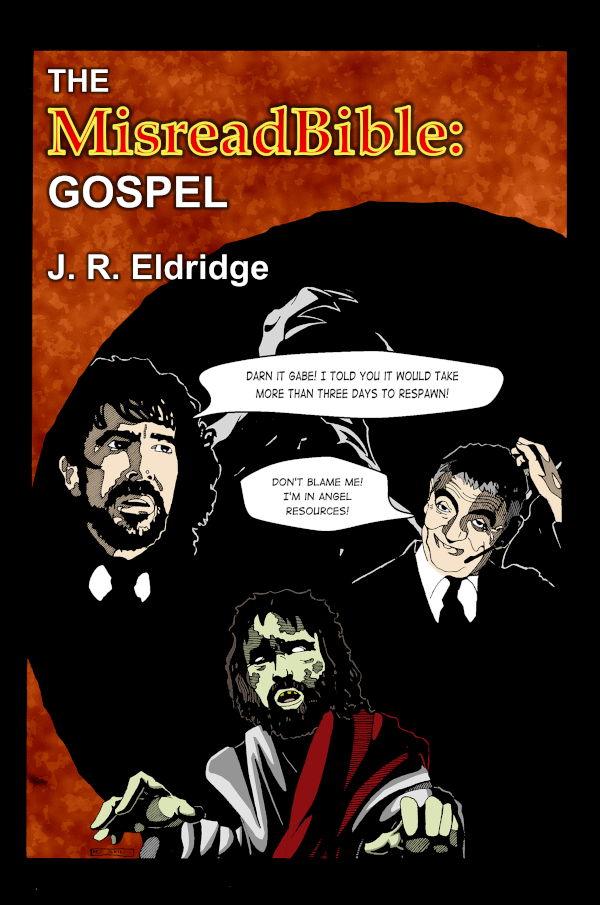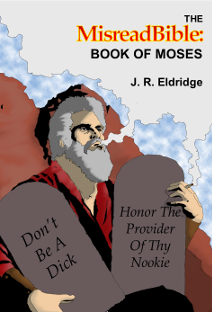Gospel Disharmony
As I’m currently working on my fourth book covering the gospels, I thought I’d write about some of their issues, and how I am dealing with them in order to write the book. In this post, I’ll be focusing on the issues, and I plan to write a follow up addressing how I am dealing with them.
As you may know, the Bible is riddled with contradictions, and it’s not at all surprising given that it was written by multiple authors with different religious views over a period of centuries. Often authors would write narratives based on the same source, and the resulting stories would have some common elements but differ many ways. I gave an example of this in my earlier post Sister-Wives and the Documentary Hypothesis.
When it comes to the gospels, they all purport to tell the story of Jesus’s life and ministry, and there is evidence that a lot of material comes from common sources. The majority of scholars hold that Mark was written first (circa AD 66-70), and Matthew and Luke (written circa AD 85-90) used some version of it and one or more other source (scholars call this Q, from the German Quelle meaning ‘source’). As these three gospels share a large amount of material, they are known as the Synoptic Gospels.
They tell the story of Jesus’s birth (in Matthew 1-2 and Luke 1-2), his baptism by John the Baptist, and his ministries in Galilee and Judaea (a timespan of around a year), ending with his crucifixion, and post-resurrection appearances (in Matthew 28 and Luke 24. The oldest copies of Mark cut out before any post-resurrection appearances), but the order of events varies from gospel to gospel.
The Gospel of John (written circa AD 90-110), on the other hand, has mostly unique material, sharing only a few stories with the Synoptic Gospels. Where in the synoptics, Jesus is baptised by John and then returns to Galilee, in the Gospel of John, Jesus spends time with John, baptising alongside him. Where the synoptics have Jesus starting out in Galilee and moving towards Judaea, John has him constantly making trips to Jerusalem in Judaea for various festivals and says very little about his activities in Galilee. John’s version describes a period of around three years, as three separate Passover festivals take place.
Many attempts have been made by Christian scholars to reconcile (or harmonise) the gospels, creating an accurate timeline of events. This can take the form of a single merged narrative called a synopsis, or as a table of corresponding verses called a harmony.
Jesus’s Peraean Ministry
The contradictions between accounts are glaring, and the attempts to harmonise the gospels often create more issues than they resolve. One of the weird side-effects of harmonisation is the invention of a ministry not found in the text of the gospels: Jesus’s Peraean ministry.
In Mark 10 and Matthew 19, Jesus leaves Galilee for the region of Judaea and beyond the Jordan (Peraea). Presumably, Jesus’s discourse about divorce, the blessing of the little children, and the conversation with the rich young man took place here. Straight afterwards, he continues his journey to Jerusalem via Jericho. Peraea is merely one stop along his way during his journey.
In John 7, after Jesus’s brothers invite him to go to the Festival of Tabernacles (Sukkot), he travels down to Jerusalem alone and ends up preaching at the temple. There is no mention of him returning to Galilee, so presumably, he remained in Judaea. Then in John 10, he goes to the temple for the Festival of Dedication (Hanukkah), after which he retreats to Peraea. Nothing is mentioned about what he does in Peraea, and the next thing we read is that he went to Bethany, near Jerusalem, to resurrect Lazarus, and retreated to Ephraim in northern Judaea, and he set off from there for his final journey to Jerusalem.
However, in Luke, no mention is made of Peraea, and instead, in Luke 9, ‘Jesus resolutely set out for Jerusalem,’ and sent some of his disciples to a village in Samaria. When they are rejected, he goes to another unspecified village. Between Luke 9 and 18, his location isn’t reported, except for in Luke 17 when he’s said to be on the border between Galilee and Samaria. Then he continues on to Jericho (in Luke 18) to continue his journey to Jerusalem.
In an attempt to reconcile this, some harmonies place all or some of the events between Luke 9 and 18 (where no location is reported in the text) in Peraea and move Luke 17’s story of Jesus on the border of Galilee and Samaria back to when his disciples were rejected in Samaria. And thus, they have invented Jesus’s Peraean ministry.
Contradictory Order of Events
These are just some examples of some of the narratives that occur at different points in different gospels.
The Healing of the Paralytic at Capernaum
According to Mark 2, it took place when Jesus returned to Capernaum after calling the fishermen. According to Matthew 9, it took place as he was leaving the boat after crossing the Sea of Galilee from Gadara after curing two demon-possessed men. And according to Luke 5, it happened while he was ‘in one of the cities’ of Galilee preaching.
The Cleansing of the Temple
According to John 2, it took place at the beginning of Jesus’s ministry after the Wedding at Cana, but in the Synoptic Gospels (Mark 11, Matthew 21, Luke 19), it occurred towards the end when he was in Jerusalem before the crucifixion.
Contradictory Details
Here are some examples of narratives with even more contradictory details.
The Anointing of Jesus
A woman anoints Jesus with ointment.
| Mark 14 | Matthew 26 | Luke 7 | John 12 | |
|---|---|---|---|---|
| Town | Bethany | Bethany | Doesn’t say | Bethany |
| In the house of | Simon the leper | Simon the leper | Simon the Pharisee | Lazarus |
| When | Just before crucifixion | Just before crucifixion | Galilean ministry | Just before crucifixion |
| Who | Unnamed woman | Unnamed woman | Unnamed sinful woman | Mary the sister of Martha |
| What she does | Pours ointment over Jesus’s head | Pours ointment over Jesus’s head | Anoints his feet and dries them with her hair | Anoints his feet and dries them with her hair |
| Disciples were present | Yes | Yes | No | Yes |
The Exorcism of Legion
Jesus and his disciples cross the Sea of Galilee and are approached by one or two demon-possessed men and casts the demons into a herd of pigs.
| Mark 5 | Matthew 8 | Luke 8 | |
|---|---|---|---|
| Place | Gerasa | Gadara | Gerasa |
| Demoniacs | One | Two | One |
| Came from | Tombs | Tombs | City |
| The demoniac was naked | Yes | No | Yes |
| Demons identify themselves as Legion | Yes | No | Yes |
| Man wants to join Jesus | Yes | No | Yes |
The Empty Tomb
After Jesus’s crucifixion Mary Magdalene goes to anoint his body.
| Mark 16 | Matthew 28 | Luke 24 | John 20 | |
|---|---|---|---|---|
| Who goes to the tomb | Mary Magdalene, Mary mother of James, and Salome | Mary Magdalene, and the other Mary | Mary Magdalene, Joanna, Mary the mother of James, and a number of other women | Mary Magdalene |
| Stone already rolled away | Yes | No | Yes | Yes |
| Earthquake | No | Yes | No | No |
| Guards present | No | Yes | No | No |
| Who they see | A young man in white in the tomb | An angel descending outside tomb | Two men in shining clothes in the tomb | Nobody |
| Women enter the tomb | Yes | No | Yes | No |
| Peter enters the tomb | No | No | Yes | Yes |
| They see resurrected Jesus immediately | No | Yes | No | No |
| Disciples told | The women are ordered to, but instead flee in terror | Yes | Yes | Yes |





